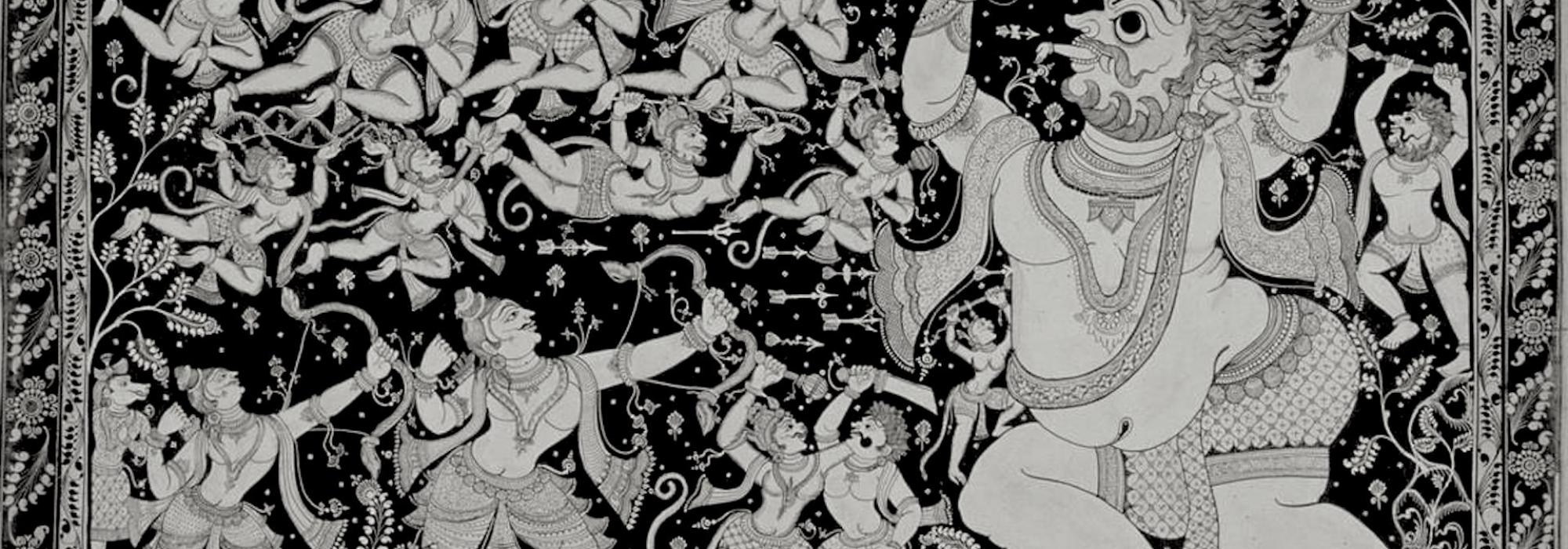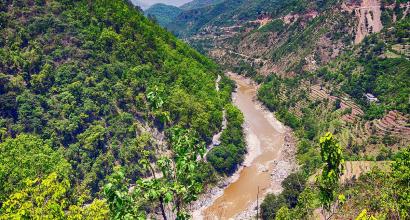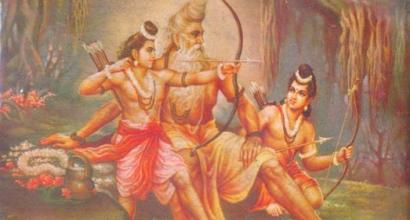The story of the Ayodhyakanda begins during the time after Sri Ramachandra returns to Ayodhya with Sita Devi from Mithila and the couple spend several days in happiness.
jīvatsutātapādeṣu nūtane dārasaṃgrahe |
mātṛbhiścintyamānānāṃ te hi no divasā gatāḥ || (Uttararamacaritam: 1-19)
As father, Dasharatha has taken up all the responsibilities of the kingdom and his own family, and has provided all comforts so that his children could life without any worries. The wives of Sri Rama and his brothers have newly entered the home; all the couples are in the full bloom of youth; they are in the throes of budding romance; the three mothers—Kausalya, Sumitra and Kaikeyi take enormous joy watching the playful antics of these newly-wedded couples. They are constantly thinking about ways and methods to further heighten the joy of these couples—newer varieties of delicacies, garments, ornaments and sports. This is the picture of the life led by Sita and Rama when they newly came to Ayodhya. The very thought of Dasharatha who hit upon a way to increase their happiness by a greater measure is precisely what destroyed their existing joy itself. The thought of coronating Sri Rama swallowed the familial happiness that had been established by then. Indeed, this kind of poisonous concoction is certainly not rare in the history of manmade, grand plans.
In this manner, the Ayodhyakanda contains several heart-touching episodes. The obstacle in the way of the coronation, the conversation chain between Manthara and Kaikeyi, the conversations between Dasharatha, Kausalya and others and Rama, Lakshmana and others, the arrangements made for the forest exile, the parting, the anger and sadness of the citizens…and later, descriptions of the river and mountain, portraits of the Rishi Ashrams, the Ashrama at Chitrakoota—thus it unfolds, all these heart-wrenching scenes in the story. The Ayodhyakanda is the portion of the story from the departure of the city of Ayodhya up to entering the Dandaka forest.
A good work of poetry contains several beautiful aspects within it. The architecture of the plot, description of the conversation, beauty of vocabulary, the beat of the verses—all of these are definitely interesting. Rasa awakens in the mind of the reader on account of the experience of all these interesting elements. All these are desirable fruits that one obtains in such poetry. That is truly a great insight (Darshana). The greatest benefit accruing to us from a Mahakavya is the vision of this insight.
The work of a Mahakavya is to make us experience the loftiness hidden inside humanity. By bringing characters endowed with different temperaments before our eyes, it unfolds different types of greatness. We witness in our daily lives in this world how ordinary people behave in ordinary circumstances. However, it is only in the Ramayana and Mahabharata that we discern how a great person conducts himself under extraordinary circumstances. A great poet’s work is the portrayal of such a great person. His creation chiefly is not linguistic feats or sojourns in fleeting emotions or using brilliant figures of speech. It is verily a creation of a truly great personality. Creating a special circumstance that tests human nature and placing this great personality inside it, and showing how his or her conduct divulges itself in it...what is his/her response to questions raised by the circumstance…this is what the great poet shows. It is this expression of human nature that the reader should always bear in mind. The reply that a person gives to the questions posed by a particular circumstance is what reveals his conduct and actions. This is known as character study in English. Be it the Ramayana, Mahabharata, Shakespeare’s plays, the novels of Dickens, George Eliot and others, what stands out is the unfurling of characters therein—and the markers of their nature.
In this way, a Mahakavya becomes an instrument and a vehicle for investigating and revealing human nature.
Sri Ramachandra has made up his mind to renounce the kingdom. Dasharatha, Kausalya and others are getting ready for this parting with a heavy heart. Everyone knows that Sri Rama will never waver from his vow. In the end, Dasharatha puts forward a small request: “My son, you’re steadfast in your vow. It is impossible for anybody to make you come back. Which is good. I will not stop you. But here’s the thing: postpone your journey for just this one night. If you stay here tonight, I and your mother will at least have the joy of spending some more time with you. Please agree to this at least.”
This is the request of Maharaja Dasharatha. What was the reply given by Sri Rama?
prāpsyāmi yānadya guṇān
ko me śvastān pradāsyati |
apakramaṇamevātaḥ
sarvakāmairahaṃ vṛṇe || (Ayodhyakanda 34:40)
Father, the qualities that I possess today—adherence to truth, reverence to the progenitors, readiness for renunciation—who will infuse these qualities within me tomorrow? My mind and intellect might change tomorrow morning. Tonight, somebody might visit me and give a discourse which might make me change my mind. Dharma is always faced with such dangers. Human nature is constantly susceptible to change and fickleness. The safest path is this: the moment the mind realizes Dharma, it must be implemented there and then. Therefore, I must depart right now. I like to follow in this path.
This is the expression of Sri Rama’s inner life.
It is true that Dasharatha had given his word to Kaikeyi. However, how just was this promise? When he was giving his word, what was his state of mind? Was it equanimous and content? Was it deserved? Wasn’t it agitated with fear and passion? Was the promise really wise? Or was it given in haste? There is no value for a promise that is not rational and wise. Secondly, should we regard it only literally or in its essence? What was the innate desire in Dasharatha’s mind when he gave the promise? Was it to deprive his eldest son of the kingdom? Thirdly, was Kaikeyi’s request consonant with the Dharma of her station and country? Was it Dharma to grant her whatever she desired? If she had asked, “renounce Kausalya,” would it have been granted?
All such logical questions become relevant in this context. However, Sri Rama needed none of them. Sri Rama had no need to question the justifiability or otherwise of Dasharatha’s promise to Kaikeyi. Had he possessed even an iota of the desire to get the kingdom, he would have begun searching for reasons for a dispute. He had absolutely no such desire to begin with. Within himself, it was as though Sri Rama had decided that exile in the forest rather than ruling the kingdom was far more preferable. The manner in which Sri Rama had already prepared for the exile and conducted himself with great enthusiasm gives us this impression. Preparation for sacrifice was his response to that dire question that faced him in that circumstance.
To be continued











































